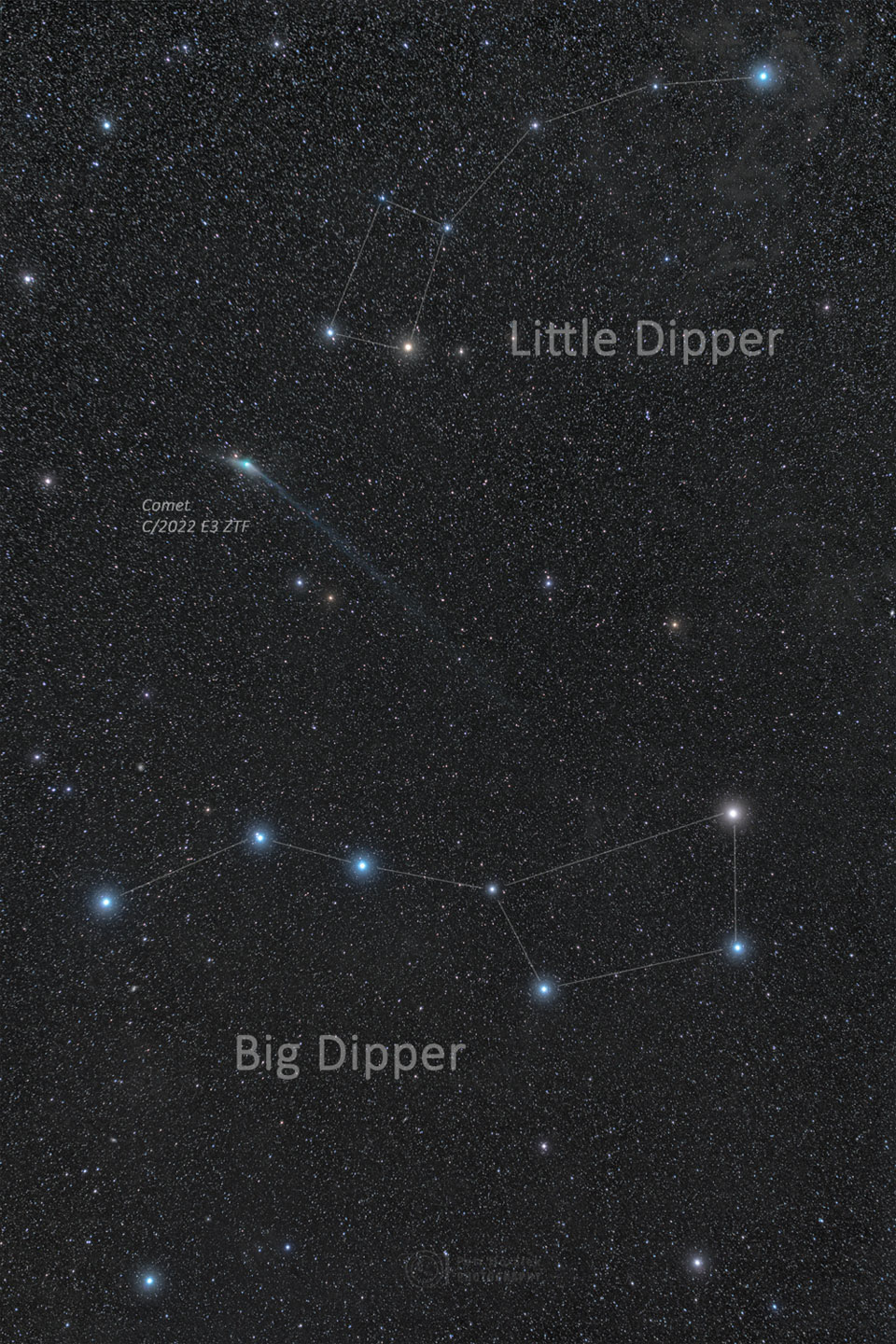2023年2月7日
A Comet and Two Dippers
Image Credit & Copyright: Petr Horalek / Institute of Physics in Opava
Explanation: Can you still see the comet? Yes. Even as C/2022 E3 (ZTF) fades, there is still time to see it if you know where and when to look. Geometrically, Comet ZTF has passed its closest to both the Sun and the Earth and is now headed back to the outer Solar System. Its orbit around the Sun has it gliding across the northern sky all month, after passing near Polaris and both the Big and Little Dippers last month. Pictured, Comet ZTF was photographed between the two dippers in late January while sporting an ion tail that extended over 10 degrees. Now below naked-eye visibility, Comet ZTF can be found with binoculars or a small telescope and a good sky map. A good time to see the comet over the next week is after the Sun sets — but before the Moon rises. The comet will move nearly in front of Mars in a few days
Comet ZTF Gallery: Notable Submissions to APOD
Tomorrow’s picture: wind star
彗星与大、小北斗
图像提供与版权: Petr Horalek / Institute of Physics in Opava
说明: 你还能看到ZTF彗星吗?是的。纵然彗星C/2022 E3(ZTF)逐渐变暗,但如果在这段期间你知道该在何时往何处看,仍有机会看到它。几何上来说,ZTF彗星已经通过最靠近太阳及地球的位置,目前正往太阳系外围远去。在上个月通过北极星及大北斗与小北斗附近之后,在它绕行太阳的轨道上,于接下来的整个月都会在北天飞掠。如上面这幅图像所示,在1月底拍照之时,ZTF彗星曳着伸展长度超过10度的离子尾,刚好通过大北斗与小北斗之间。目前ZTF彗星的亮度已在裸视极限以下,不过仍然可以靠双筒或小望远远镜及一幅好星图找到它。在下星期,观赏这颗彗星的好时机是在太阳下山之后,但在月亮升起之前。在接下来的这几天里,ZTF彗星将移到火星前方附近。
彗星ZTF画廊: 提交给APOD的值得注意的作品
明日的图片: wind star







